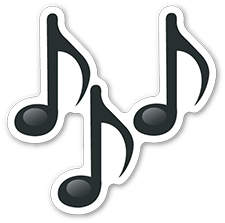Extended
Techniques — Figurations, Variations, & Classifications
“You must be like me; you must suffer in rhythm.”
― JEAN-PAUL SARTREThe purpose of this set of études in microcomposition, technique, and mutant instrumentation is to publish unorthodox and incomplete processes from my studio practice. I’m aiming to forego formalism to examine and rehearse rudimentary forms and sonorities without being encumbered by compulsions to situate them into any broader compositional framework. Variations and refigurations of motifs, tunings, systems, timbres, and temporalities will be the primary material examined here.
This will also be an exercise in documentating the materials utilized in my compositions, sound design, and recordings. I will be publishing documentation of process software, architectural acoustic experiments, mutant instruments, circuits, physical materials, microphone techniques, mathematical functions, and photos in the field collecting data or sounds.
Notation, visual scoring, and graphical representation of the musical, spectral, temporal, and spatial domains will be another region of experimentation that I’m aiming to undertake with the project. Graphical notation will complement the extended techniques as an aesthetic counterpart for the musician, ensemble, or computers.
ABSTRACTION AND ANALYSIS
“Ideas are distributed in space. An idea isn't only in one part; one part can't express the idea any longer, only the union of parts can completely express the idea. The idea found it necessary to be presented by several parts. After that, there was a rapid flowering of polyphony.” ― Anton Webern (From the Path to New Music, 1975.)

